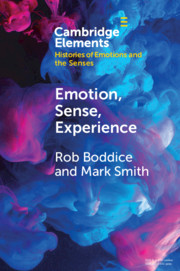Element contents
Emotion, Sense, Experience
Published online by Cambridge University Press: 18 September 2020
Summary
Keywords
- Type
- Element
- Information
- Online ISBN: 9781108884952Publisher: Cambridge University PressPrint publication: 15 October 2020
References
- 57
- Cited by

